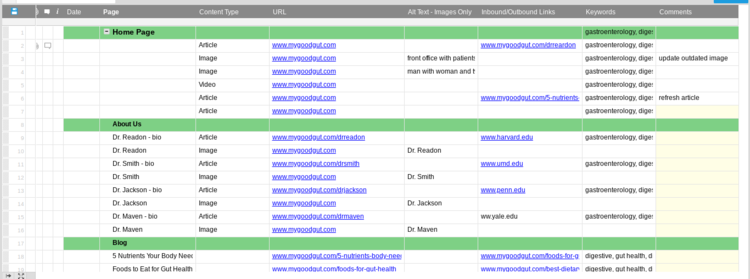Whether you call it migrating or replatforming, moving a website to a new content management environment can be a daunting process. The primary goal of any migration process is that customers experience little-to-no impact to site functionality as content moves from one software platform to the next.
But often in the excitement to upgrade a platform to a system with innovative new features or easier navigation, organizations often fail to do two critical things before hitting the migration button. They don’t conduct an inventory of the content they have on their existing site and they don’t review that content to ensure it’s suitable to keep.
Before replatforming a website it’s crucial to conduct a content inventory to document what content exists on the website and where. And it is equally important to audit that content for usability and relevance. Simply put, review what content is on your website, and should it be moving to the new site or removed.
It may seem like a no-brainer to do a content audit and inventory, but many companies fail to engage in the practice, causing a myriad of technical and functional problems when they launch a new website.
One client we worked with had been producing article content for close to a decade. But during that time, they never went back to fix broken links, update images or review the content for relevancy. The result was a dated website that left customers baffled when they clicked on links that went nowhere or referred to events had happened years before.
To give you a glimpse of what an audit can produce, that client when they recently conducted a review on their website ahead of upgrading to a new system had:
- 12 URLs
- 2,569 unique URLs
- 7, 345 linked pages
- 4 microsites
- 47 videos
- 18 landing pages
- 4 Excel spreadsheets
- 8 tabs of data
Failing to conduct a proper inventory and audit can impact how well the new site works. Often the move to an upgraded site, one with better navigation and appearance, can be compromised if it is burdened with the same ineffectual content that bogged it down in the first place. The process is the opportunity to purge what does not work and realign content strategy with the organization’s goals and mission.
Needless to say, it took a considerable amount of time and effort to cull through each line of content to decide what content would move to the new site. That included reviewing each piece of content for link rot, the degradation of links that occur over time as third-party links move or are deleted. It took our client more than three months to inventory all content on their website. Then it was another six months to complete a thorough review of all the content on their site before being ready to publish their new website.
HOW TO CONDUCT AN EFFICIENT CONTENT INVENTORY
A content inventory is the process of placing an organized list of files in a spreadsheet like Excel or software such as Trello, Asana or AirTable. The inventory documents each piece of content – text, images, video, infographics, data graphics, inbound and outbound links on every page of the website.
The inventory should also include keywords and metadata for each page and each individual content item.
A sample content inventory looks like this:

PERFORM A COMPREHENSIVE CONTENT AUDIT
A content audit is a review and assessment of the performance and effectiveness of the content items on the site. As mentioned previously, it gives an organization the opportunity to evaluate each item on key performance indicators that have been previously chosen. Those KPIs could include audience engagement or revenue generation.
As content is reviewed, it also a good time to consider strategies to improve both organic and paid search performance. It may be aligning keywords f or updating headlines, deks or other content attributes for better search engine optimization.
It is also the time to determine if the content items are topics that your audiences prefer or if existing content can be rewritten or repackaged to enhance engagement. It is the time to add or remove product links, refresh images or update graphics. It is also the time to assess gaps in content along the different stages of the sales funnel.
ESSENTIAL TIPS:
- Set aside adequate time before a website migration to conduct a comprehensive content audit and inventory.
- Use the audit and inventory to align content strategy goals and mission.
- Enhance content KPIs.
Grab a copy of our free Content Audit and Inventory worksheet.